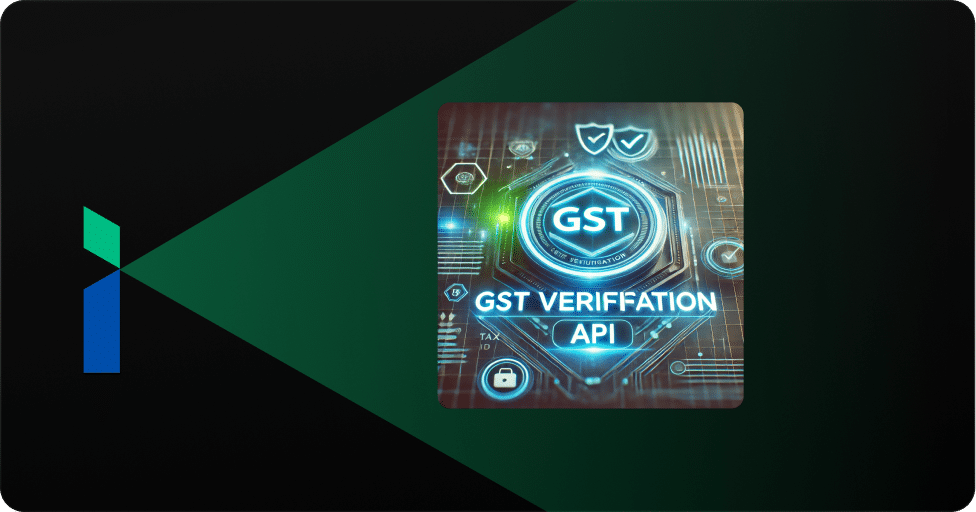Did you know that over 80% of businesses in India face GST compliance challenges due to manual processes? From incorrect data entry to fraudulent GSTINs, the risks are real and costly. Enter the GST Verification API—a game-changer for businesses aiming to streamline operations, ensure compliance, and stay ahead in the digital era.
In this guide, we’ll walk you through the step-by-step process of integrating a GST Verification API, highlighting its benefits, challenges, and real-world applications. Whether you’re a small business owner juggling multiple tasks or a large enterprise managing complex operations, this guide will help you navigate the complexities of GST compliance with ease.
With the rise of e-invoicing and real-time data validation, the need for automated GST verification has never been greater. A GST Verification API not only simplifies compliance but also enhances operational efficiency, reduces errors and prevents fraud. By the end of this guide, you’ll have a clear roadmap to integrate this powerful tool into your business systems and unlock its full potential.
So, if you’re tired of manual GSTIN checks and compliance headaches, it’s time to embrace the future of GST verification. Let’s dive in!

The Challenge
Manual GST verification is a tedious, error-prone process that often leads to compliance issues. With over 1.3 crore registered businesses under GST, the sheer volume of data makes it nearly impossible to verify GSTINs manually without errors. Add to that the risk of fraudulent GSTINs, and businesses are left vulnerable to compliance failures, financial losses, and operational inefficiencies.
Imagine this: Your accounts team spends hours cross-checking GSTINs, only to discover discrepancies later. Or worse, you unknowingly accept a fake GSTIN, leading to penalties during an audit. These scenarios are all too common in today’s fast-paced business environment, where manual processes simply can’t keep up.
Non-compliance isn’t just a minor inconvenience—it can result in hefty penalties, operational delays, and even reputational damage. For businesses, especially SMEs with limited resources, the stakes are high. The need of the hour is a reliable, automated solution that can verify GSTINs in real-time, ensuring seamless compliance and peace of mind.This is where the GST Verification API steps in. By automating GSTIN validation, businesses can eliminate manual errors, reduce fraud risks, and stay compliant with ever-evolving GST regulations. The question isn’t whether you need it—it’s how soon you can integrate it.
What is a GST Verification API?
A GST Verification API is a powerful tool designed to automate the process of validating GSTINs (Goods and Services Tax Identification Numbers) in real-time. It acts as a bridge between your business systems and the government’s GST database, enabling seamless verification of GSTINs, retrieval of taxpayer details, and validation of compliance status.
How It Works:
- Real-Time GSTIN Validation: The API instantly checks whether a GSTIN is valid and active by cross-referencing it with the government’s database.
- Data Retrieval: It fetches essential details like business name, registration status, and jurisdiction code.
- Integration: The API can be integrated into your existing systems—such as ERP, accounting software, or e-commerce platforms—using SDKs or REST APIs.
Benefits of Integrating a GST Verification API
- Enhanced Compliance:
- Stay updated with the latest GST regulations and avoid penalties.
- Automatically validate GSTINs to ensure accurate invoicing and reporting.
- Fraud Prevention:
- Detect and eliminate fake or inactive GSTINs, reducing the risk of fraud.
- Ensure that you’re dealing with legitimate businesses.
- Operational Efficiency:
- Save time and resources by automating manual GSTIN checks.
- Streamline processes like e-invoicing, vendor onboarding, and compliance reporting.
- Cost Savings:
- Avoid hefty penalties for non-compliance.
- Reduce operational costs by minimizing manual effort and errors.
Challenges in GST Verification API Integration
While the benefits are undeniable, integrating a GST Verification API comes with its own set of challenges:
- Technical Complexity:
- Integration requires skilled IT resources and familiarity with APIs.
- Businesses with limited technical expertise may face hurdles during implementation.
- Regulatory Updates:
- GST laws and regulations are frequently updated, requiring businesses to keep their systems up-to-date.
- Failure to adapt to these changes can lead to compliance issues.
- Data Security:
- Handling sensitive GST data requires robust security measures to prevent breaches.
- Businesses must ensure that the API provider complies with data protection standards.
Step-by-Step Guide to Integration

- Choose the Right API Provider:
- Look for providers like Perfios, Inspay, or SurePass that offer reliable, secure, and scalable solutions.
- Consider factors like ease of integration, pricing, and customer support.
- Set Up Developer Access:
- Sign up with the API provider and obtain your API keys and credentials.
- Ensure that your team has the necessary documentation and resources.
- Integrate with Your System:
- Use SDKs or REST APIs to connect the GST Verification API with your existing systems.
- Customize the integration to suit your business needs, such as automating vendor onboarding or e-invoicing.
- Test the API:
- Run multiple test cases to ensure the API works accurately and reliably.
- Check for errors, response times, and data accuracy.
- Go Live:
- Deploy the API in your live environment and monitor its performance.
- Regularly update the system to accommodate regulatory changes and new features.

Future Outlook
The future of GST verification is poised for exciting advancements, driven by technology and government initiatives. Here’s what to expect:
Emerging Trends:
- AI-Powered Verification: Artificial Intelligence will enhance the accuracy of GST verification by identifying patterns and anomalies in data, reducing errors further.
- Increased Adoption: Sectors like e-commerce, logistics, and fintech will increasingly adopt GST automation tools to stay compliant and competitive.
Predictions:
- The GST Verification API market is projected to grow at a CAGR of 15% over the next five years, driven by the need for real-time compliance and fraud prevention.
- Government initiatives, such as the push for e-invoicing and digitization, will accelerate the adoption of GST automation tools.
Conclusion
Key Takeaways:
- Integrating a GST Verification API is no longer optional—it’s essential for ensuring compliance, preventing fraud, and boosting operational efficiency.
- By choosing a reliable provider, following the integration steps, and staying updated with regulatory changes, businesses can future-proof their operations.
Ready to streamline your GST compliance? Connect with us today and take the first step toward seamless, error-free operations!














